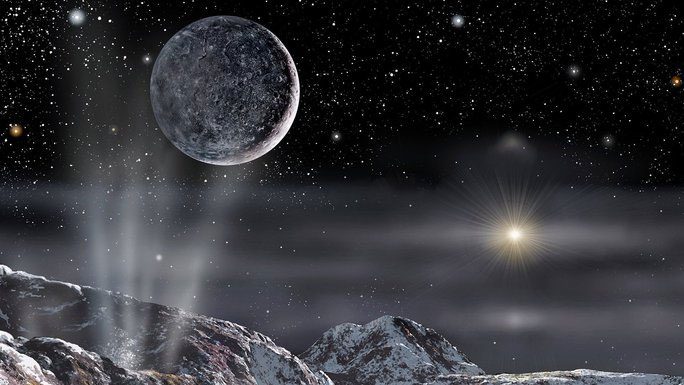If the signs of a subsurface ocean on Pluto have given some scientists hope for life, the subsurface ocean on its moon Charon presents a nightmarish scenario.
Researchers from the Southwest Research Institute (SwRI) have examined a wealth of surprising data from NASA’s New Horizons spacecraft to uncover the nature of the mysterious celestial body Charon, which was once thought to be a barren ice ball.
Back in 2015, the fascinating geological features of Charon shocked the scientific community when New Horizons – the spacecraft that studied Pluto – made its flyby.
According to Space, the primary shock was the evidence of a subsurface ocean, something that astronomers have long sought in celestial bodies in hopes of finding life.

Charon as seen from Pluto – (Graphic from NASA/BBC)
However, unlike the subsurface ocean that may contain liquid water beneath Pluto’s heart-shaped plains, which some scientists have studied and hoped could harbor extreme life forms, Charon’s subsurface ocean appears to have a devastating impact on the moon.
While volcanoes on Earth erupt with terrifying molten rock, the icy ocean of Charon could find its way to the surface through “cryovolcanoes”, erupting ice materials in a manner similar to terrestrial volcanoes.
Moreover, evidence suggests that this ocean was initially in a liquid state before gradually freezing as the moon’s outer shell formed. The ice can have a larger volume than the water that created it; thus, this ocean is responsible for cracking Charon’s surface – in other words, this “ice hell” has literally shattered the moon.
The canyons created by the ocean’s fracturing on Charon’s surface run along a global tectonic belt, separating the moon’s northern and southern geological regions.
The aforementioned properties also help predict a series of geological activities related to the evolution of this mysterious moon, as well as provide further insight into the fate of celestial bodies with subsurface oceans.
The study of Charon also offers more data about Pluto itself, a celestial body that remains cloaked in mystery and whose status is still ambiguous: The International Astronomical Union (IAU) asserts it is merely a dwarf planet, while NASA insists it is “more than qualified” to be classified as a planet.
The new research on Charon has just been published in the scientific journal Icarus.





















































